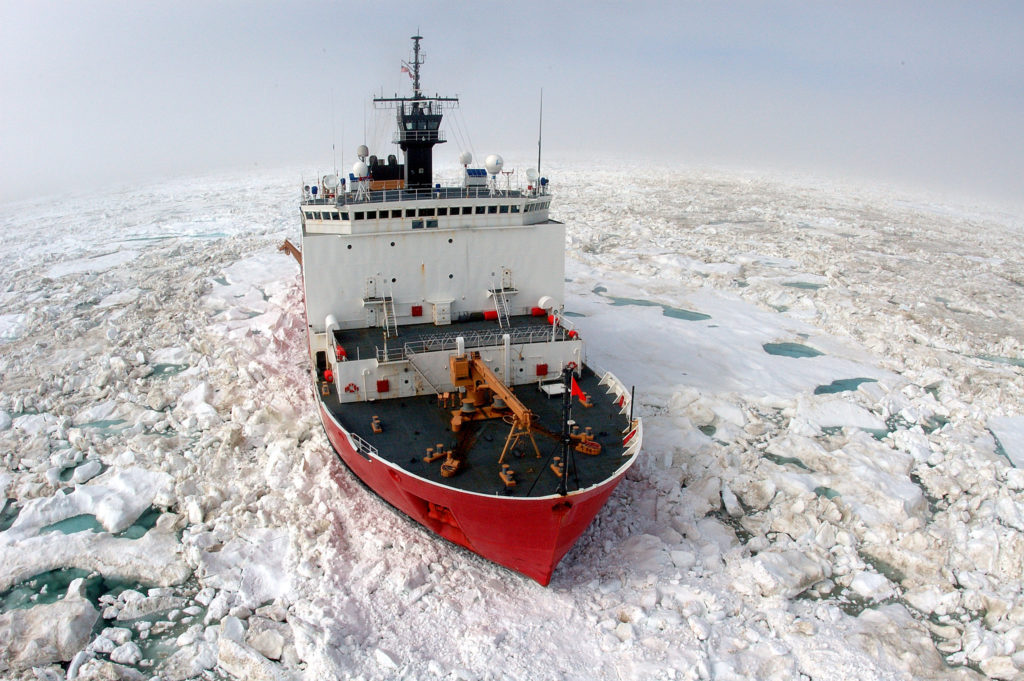US Coast Guard proposes purchase of existing icebreaker as Arctic ‘bridging strategy’
The newest White House budget proposal includes $125 million to procure an existing icebreaker.

The Biden administration is requesting $125 million in its 2023 budget to purchase an existing privately owned U.S. icebreaker.
The funds would cover the estimated cost of buying a “commercially available” icebreaker, including initial modifications, U.S. Coast Guard spokesperson Richard Kolko told ArcticToday in an email, but more money “would be required to reach full operating capability.”
As the Arctic becomes more accessible due to climate change and more economically and geopolitically significant, a modified icebreaker would “increase near-term presence in the Arctic” until new polar security cutters are operational, according to the budget request.
The most likely candidate is Aiviq, an ice-hardened tug supply vessel built by Edison Chouest in 2012 for $200 million. The other privately owned icebreaker in the U.S., Nathaniel B. Palmer, was built for the National Science Foundation, which leases the ship.
The 360-foot Aiviq was intended for Shell’s oil exploration in the Beaufort and Chukchi seas — primarily for towing and laying anchors, but also for responding to oil spills. But when Shell shelved its oil exploration plans in 2015, the Aiviq was left without a mission.
The ship is currently being leased by Australia for work in Antarctica. Its ice classification would accommodate work in the Arctic for six months of the year and in Antarctica for four months of the year, but it would require significant modifications to adapt it to the Coast Guard’s specifications.
In 2016, Rep. Don Young, the late Republican representing Alaska, pressed Coast Guard leadership on a proposal to acquire the Aiviq.
At the time, Adm. Charles Michel, then vice commandant of the service, responded that “our current opinion is that ship is not suitable for military service without substantial refit.”
In December 2021, Sen. Dan Sullivan, who did not respond to ArcticToday’s request for comment, again raised the prospect of procuring an existing icebreaker via lease or purchase.
The Trump White House also considered leasing icebreakers, likely from Finland, though a 2017 report found that buying icebreakers would be more cost-effective than leasing them. However, current U.S. law prohibits the Coast Guard from acquiring a vessel constructed in a foreign shipyard.
Six new icebreakers have been authorized by Congress, and three have received full or partial funding.
But the steel has not yet been cut for the first new icebreaker in decades, Polar Sentinel, despite the contract being awarded in 2019. The ship will not be delivered until May 2025 at the earliest; according to the budget request, it “will not be operational until the late 2020s.”
The Coast Guard calls the acquisition and operation of an existing vessel a “bridging strategy to achieve accelerated Arctic surface presence while Polar Security Cutters are constructed.”
These icebreakers are among its top two acquisition priorities for FY 2023, according to the budget request.
The budget request also includes $167.2 million for the acquisition of three new icebreakers, and $15 million for a service-life extension of the 46-year-old Polar Star. The nation’s only heavy icebreaker entered a dry dock in Vallejo, California, immediately after returning from this year’s McMurdo resupply mission in April.
The request from the White House still needs to go through Congress for approval of the fiscal year 2023 budget, which would begin on Oct. 1.